
On Kawara, Arahmaiani and Lee Mingwei at Museum MACAN, Jakarta, 17 November – 10 March
Jakarta’s privately funded Museum MACAN (Museum of Modern and Contemporary Art in Nusantara), which opened last November, is among the latest pillar of the culture industry’s establishment. It’s one-year anniversary will be marked by three exhibitions of work by some of Asia’s leading conceptualists, On Kawara, Arahmaiani and Lee Mingwei. Taiwanese-American Lee will show seven projects in a display branded Seven Stories. Among them is Guernica Sand (2006–), in which volunteers help to construct a reproduction of Picasso’s famous painting out of local sands over a three-week period. At the mid-point of the exhibition, the audience is invited to walk across the already laid-out sand while the artist carries on completing the work. Ultimately the whole thing is swept away. Bandung-born Arahmaiani established herself during the 1980s as one of the pioneers in the now rapidly expanding field of Southeast Asian performance art. Much of her work (which is not limited to performance alone) explores the relationship between humans and nature (bingo!) as well as her own identity as a woman and as a Javanese Muslim (although her work is in no way limited by that and also includes explorations of Java’s relationship to Buddhism and Hinduism: her own name derives from the Arabic word for loving and the Hindi word for human being). Arahmaiani’s social critique has in the past led accusations of anti-Islamism (which led to a brief imprisonment in 1983 and then death-threats which led to a self imposed exile in Australia a decade later). Her 1994 work Etalase included mixed a copy of the Quran, a statue of the Buddha, a packet of condoms and a Coca-Cola bottle, among other things, in a single vitrine; MACAN will be showing over 70 of her works as a well as elements of her archives. By comparison to that, On Kawara is perhaps a tediously monotonous proposition. MACAN will be offering a reading of the artist’s One Million Years (1970–98), which, in the case of the volume titled One Million Years [Past], lists each year of a millennium beginning in 998031 BC and, in the case of One Million Years [Future] goes through to 1001997 AD (in each ‘display’ of the project the reader picks up where the last reader – in whatever institution that might have been – left off). Sometimes it’s in the quotidian and the ordinary in which you find the extraordinary. Presumably that’s what On Kawara believed in any case.
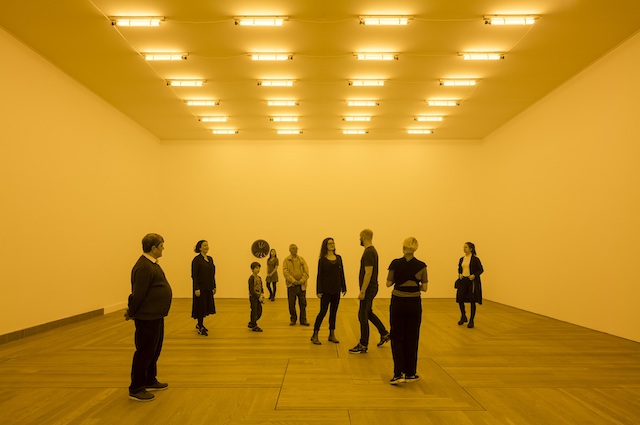
Minimalism: Space. Light. Object at National Gallery Singapore and ArtScience Museum, Singapore, 16 November – 14 April
If MACAN is accumulating years, then across the Straights of Singapore they’ve been accumulating works of Minimalism. So much of it, in fact, that the exhibition Minimalism: Space. Light. Object is housed in not one but two museums: National Gallery Singapore and the ArtScience Museum. Proof, one assumes, that a minimalist ethos does not extend to the curators of shows about Minimalism. Here there are over 150 works on show, dating from the 1950s to the present day, spread across the two sites. The exhibition aims to trace the history of minimalist art from its roots in the art history of the West – look out for work by Donald Judd, Mark Rothko, Charlotte Posenenske, et al – and to examine how that aesthetic was deployed closer to home, through the work of artists such as Ai Weiwei, Po Po and local heroes Tang Da Wu and Kim Lim. In this last respect, the show promises to be an intriguing one, given the way in which, during the second part of the twentieth century, artists from what had become Southeast Asia often struggled to make the uneasy blend of artistic contemporaneity (which took art beyond geography) and contextual specificity (so much a part of nation-building at the time) stick. It will also be fun to see how crowd pleasers teamLab get crowbarred into the ArtScience section of the exhibition.
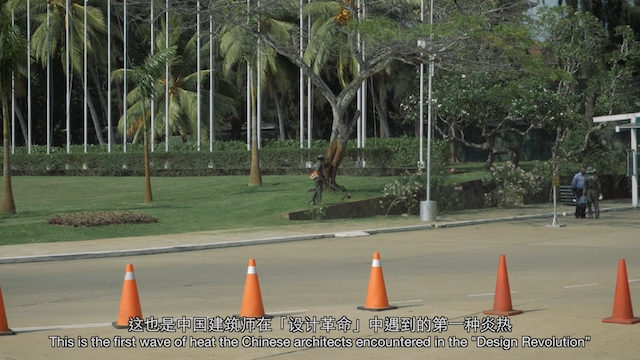
Steadfastly Raise the Standards of Nonconstructive Production at Don Gallery, Shanghai, 6 November – 30 December
After all that date chanting and minimalising you’ll be itching to return to Shanghai, where things are always taken to the max. Certainly, Don Gallery’s group exhibition Steadfastly Raise the Standards of Nonconstructive Production easily wins the prize for best exhibition title of the season. The title itself harks back to People’s Daily editorials from the 1950s that campaigned about waste in all its forms (anti-formalism, anti-reactionism and anti-waste went hand in hand at this time) during China’s programme of rapid urban and industrial construction, while the exhibition seeks to place this in the context of China’s current commercial real-estate boom (which operates without a modern design tradition that goes beyond the country’s midcentury ‘three-floors-in-three-days’ policy; you’ll be wanting to read some Henri Lefebvre here). Not every show is about nature. Mapping out the architectural terrain will be Fei Yining’s videowork New Clear War (2018), Feng Junyuan and Zeng Jiahui’s documentary work Two or Three Kinds of Heat (Chapter One) (2018) and the minimal elegance of Zhang Ruyi’s sculptures and interventions.

Tschabalala Self at Yuz Museum, Shanghai, through 9 December
After that you’ll want to pop next door to the Yuz Museum: not for the museum’s nondescript (that’s being generous) architecture; rather, for a display of paintings, sculptures, photographs and videos by Harlem-born Tschabalala Self. All the works on show explore the context of the bodega (here meaning the generally family-run corner shops found in New York) as a social nexus for communities of colour. Such places are ‘a lighthouse in an ocean of gentrification’ according to Self, who also claims that the bodega represents something of the past in a cityscape that is constantly seeking to assert its contemporary presence. Indeed the presence of such works in the rapidly gentrifying West Bund district should make her thoughts even more acutely felt. No less a critic than The New Yorker’s Peter Schjeldahl has described Self’s work (which often centres on representations of the black female body) as being in the vein of Arshile Gorky and Willem de Kooning; here’s a change to put that theory to the test.
Louise Bourgeois at Long Museum, West Bund, Shanghai, through 24 February
On the subject of American classics, the Long Museum West Bund will host the first Chinese retrospective of the work of Louise Bourgeois (OK – Franco-American classics, but that wouldn’t have made the transition so smooth). Titled The Eternal Thread (I’m thinking The Bangles now; you shouldn’t) which references both Bourgeois’s family’s involvement in the tapestry industry and the artist’s investment in fabric and sewing (particularly during the last 15 years of her career), from the Personage sculptures of the 1940–50s, through the Cell installations of the 1990–-2000s, to various explorations of the relationships between mother and child and those later fabric works. There will, of course, be the giant spider Maman (1999) looming above it all. Despite its current resonance as an extra from Peter Jackson’s Lord of the Rings trilogy (2001–03), for Bourgeois, the spider represents the nurture and protection afforded her by her mother, a weaver. A psychologist would have (and most probably has had) a field day; you’ll have to choose your interpretation for yourself.

Blak to The Future at National Gallery of Victoria, Melbourne, through 14 July
It’s Marty McFly rather than Frodo Baggins who is being evoked at the National Gallery of Victoria this month, although what the puffer-vest wearing time-traveller from 1985 has to do with the ostensible subject of Blak to the Future is opaque at best. That subject is Australia’s indigenous art (perhaps the reference, then, is to the more recent 2009 MTV series Black to the Future, which explored Black-American culture from the 1970s to the 2000s) and its relationship to the nation’s art history (for a long time there wasn’t really one), and by implication the nation’s history (for a long time there… you get the picture). Alongside earth-pigment works from the early 1980s by Alec Mingelmanganu, you’ll find recent neons and photography by Brook Andrew in a display that locates indigenous art firmly in Australia’s present as much as it’s past. And through that, it’s future too.
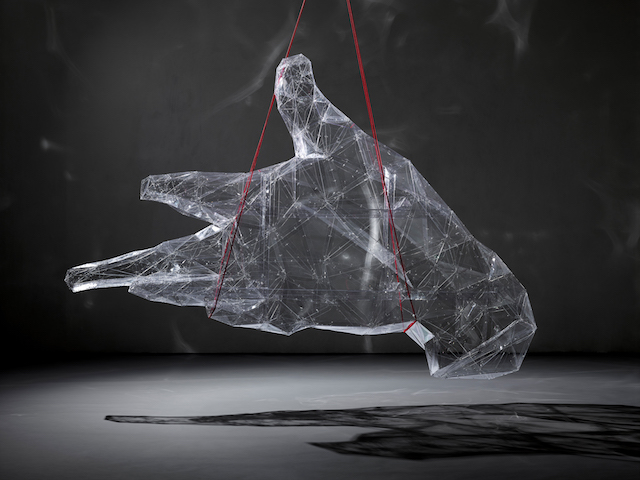
Toby Ziegler at MONA, Tasmania, through 25 March
Navigating between art’s future and its past has been something of an obsession for Toby Ziegler, who opens an exhibition of new work (titled Your Shadow Rising) down at MONA, Tasmania. Working in painting and sculpture, the British artist (not the West Wing character), models surfaces and spaces on a computer, before making his geometric artworks by hand. It’s a means by which to make the familiar alien, to destroy and reinvent, in this case via paintings, sculptures (among them a suspended, transparent tessellated hand) and ‘a lump of volcanic rock’.

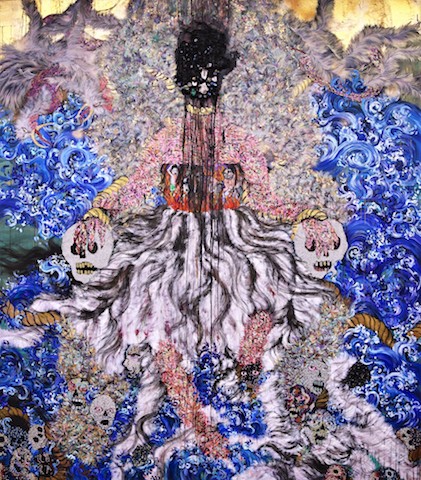
Hun Kyu Kim at The Approach, London, 15 November – 16 December and Hyon Gyon at Parasol Unit, London, 23 January – 31 March
Back in Ziegler’s hometown, London, artists from South Korea are about to have their moment in whatever it is that constitutes Britain’s winter ‘sun’. In November, Korean-born and London-trained painter Hun Kyu Kim will set up stall in The Approach gallery, while Dangiing-born, New York and Krakow-based (never thought I’d be writing that) Hyon Gyon will present a selection of recent works at Parasol Unit. Kim uses traditional silk painting techniques, a Manga-esque aesthetic (think somewhere in the middle of Tabaimo and Takashi Murakami via Hokusai and Studio Ghibli’s Hayao Miyazaki) and a narrative that belongs to the tradition of fable to tackle contemporary (political) issues (the aftermath of the Sewol Ferry Incident of 2014 among them). Gyon, on the other hand, crosses a similar aesthetic tradition (she studied nine years in Japan) with American-style expressionism and forays into abstraction, while often deriving her subject matter from imagery associated with shamanistic traditions in Korea. Both artists figure their art as a way of exorcising personal and collective demons.

Wang Haiyang at Capsule, Shanghai, 21 November – 25 December
The same might be said of Wang Hiyang, whose explorations of the weird, the erotic and the weirdly erotic continue at Shanghai’s Capsule Gallery this November. There Wang will show three videos and two sets of drawings. One of the new videos, an animation titled Party in the Anus (2018), features an androgynous figure (although if pushed I’d say certain bulges indicate male) in a black bodysuit, high heels (red) and a wig (peroxide blond), dancing inside a moist anus. The theme of the absurd is further pursued in The City of Dionysus (2018) in which human figures (sometimes with alien heads) force their way through sites of urban destruction and construction. Now there’s someone who is steadfastly raising the standards of nonconstructive production!
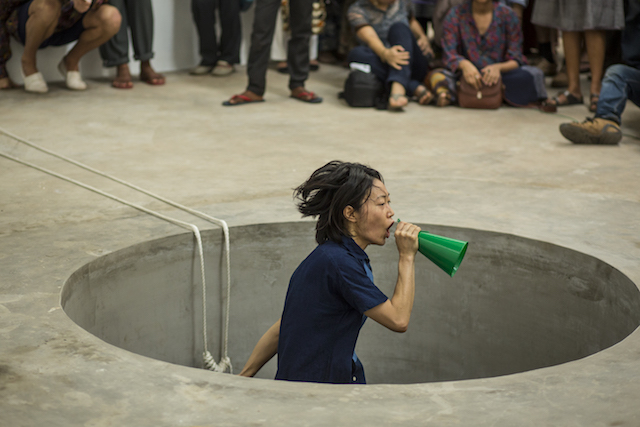
Kochi-Muziris Biennale, Kochi, Kerala, 12 December – 29 March
On a more serious note, the Indian state of Kerala is slowly being rebuilt following this past August’s monsoon-related floods. These were the worst in the region since 1924: official figures list 483 dead, 15 missing and US$3 billion worth of damage to property. It’s in that context that the latest edition of the Kochi-Muziris Biennale will open this December. The other context is that set by artist Anita Dube, whose edition of South Asia’s largest art event of this kind (as measured by Kochi-Muziris’s organisers) is titled Possibilities for a Non-Alienated Life. Her curatorial statement evinces a fusion of Guy Debord’s relation of capital, spectacle, subjugation and alienation, Jacques Derrida’s later work (channelling Montaigne) on the politics of friendship, with a smattering of Gayatri Spivak (who rose to prominence as a translator of Derrida) for good measure. ‘At the heart of my curatorial adventure,’ says Dube, ‘lies a desire for liberation and comradeship(away from the master and slave model) where the possibilities for a non-alienated lifecould spill into a “politics of friendship”. Where pleasure and pedagogy could sit together and share a drink, and where we could dance and sing and celebrate a dream together.’ Among the dreamers will be Thomas Hirschhorn, Tania Bruguera, Hassan Khan, the Guerrilla Girls, Brook Andrew, Araya Rasdjarmrearnsook, Akram Zaatari,, VALIE EXPORT, KP Krishnakumar, Shilpa Gupta, Nilima Sheikh and Walid Raad. But in the end, and particularly for this biennial, which is so rooted in the specifics of Kerala, it might be nature rather than culture that has the final say in the way it is received and the form it takes.
From the Winter 2018 issue of ArtReview Asia
